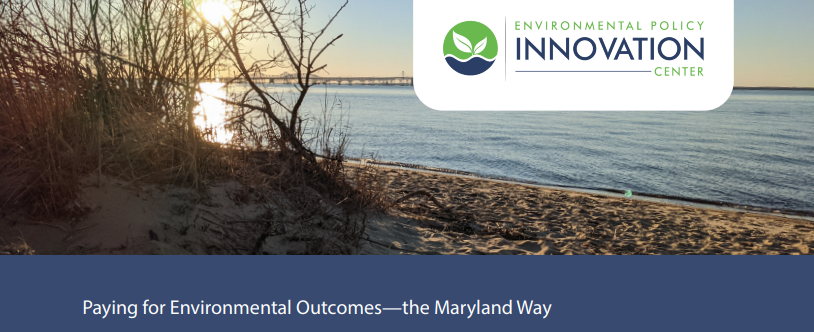
Clean Water Act: Priorities for Offset Policies that Benefit the Environment and Communities

Impact Investing Opportunities to Advance Water, Health and Equity

A look at four new natural resource procurement bills

Delivering Faster Restoration with Bipartisan Infrastructure Law (BIL) Funding

Tap into Innovation to Replace Lead Pipes

Lead in Water Harms Red States, Too

Comment Letter on the Beta Version of the Climate and Economic Justice Screening Tool

Uncommitted State Revolving Funds

Pennsylvania Clean Water Procurement Program Explainer

2022 Maryland Conservation Finance Act Support Letters
The Maryland Conservation Finance Act is a variety of tweaks to authorize new, simpler contracting approaches and attract more private investment in conservation. These letters showcase the bill’s broad support.

EPIC supports principles for Lead Service Line Replacements
Under the leadership of NRDC and other advocates, EPIC has signed on in agreement with principles to make lead service line replacement more equitable, efficient, and protective of health.

2022 Maryland Conservation Finance Act Explainer
The Maryland Conservation Finance Act is a variety of tweaks to authorize new, simpler contracting approaches and attract more private investment in conservation. This publication explains each section of the bill.

EPIC & CGS provide comments to USGS RFI to inform interagency efforts to develop the American Conservation Stewardship Atlas

Financing Green Stormwater and Natural Infrastructure with Clean Water State Revolving Funds
In this report, we examine Clean Water State Revolving Fund-financed investments in green stormwater infrastructure and natural infrastructure, which mimic or utilize natural processes to solve water quality and stormwater challenges. Communities around the country face environmental and health consequences due to failing water infrastructure. The Clean Water State Revolving Fund helps address these challenges by financing projects to improve water quality and public health. Most states and territories primarily invest in traditional gray infrastructure. In comparison to gray infrastructure, green stormwater infrastructure and natural infrastructure are often more cost-effective, climate resilient, and provide a plethora of economic and social benefits. We specifically evaluate investments in green stormwater infrastructure and natural infrastructure between 2016 and 2020 and give recommendations to state agencies and the EPA.

Unlocking Clean Water State Revolving Funds to Finance Resilience Projects Across the Great Lakes Region
Established in 1987, Clean Water State Revolving Fund (CWSRF) have played a key role in improving water quality in the United States by providing more than $145 billion to finance more than 42,800 projects nationwide. This report looks at the current status of how CWSRF dollars have been spent across the Great Lakes states, and proposes greener priorities that would spur transformation in environmental, economic, public health, and social outcomes.

Coproduce Conservation Technology With Conservation Decision Makers and Practitioners to Increase Its Impact

Net Zero or Better: Priorities for Offset Policies that Benefit the Environment and Communities

Maryland Clean Water Commerce Act Explainer


